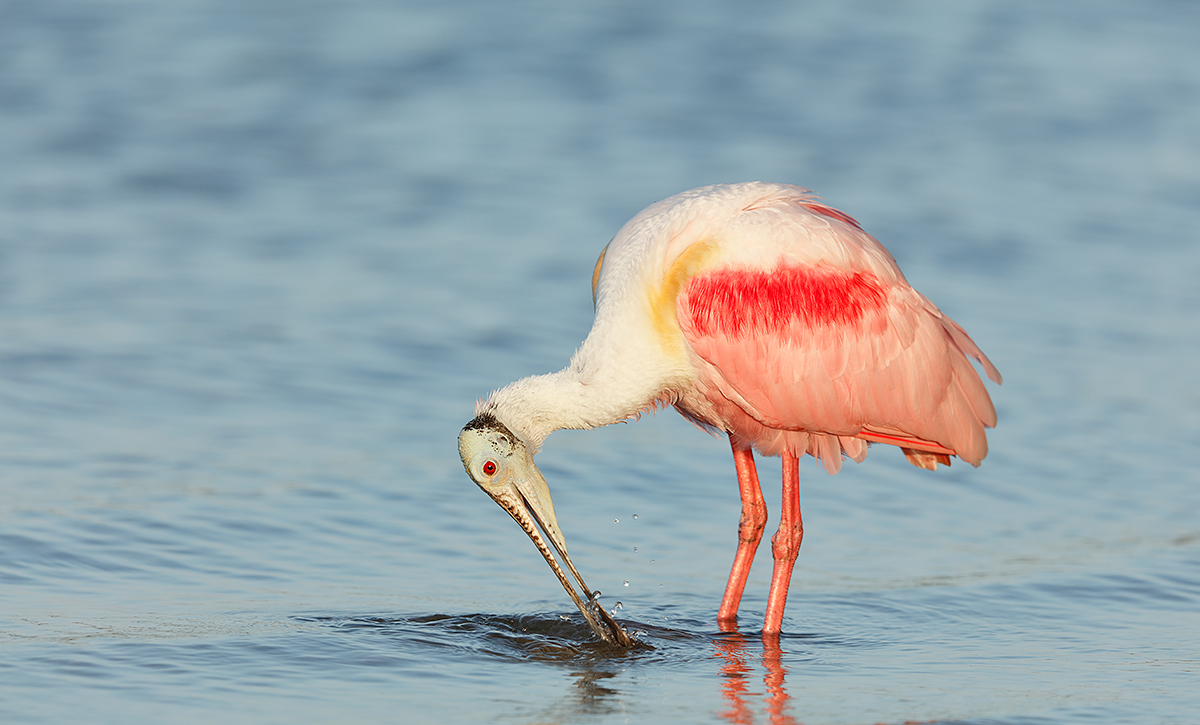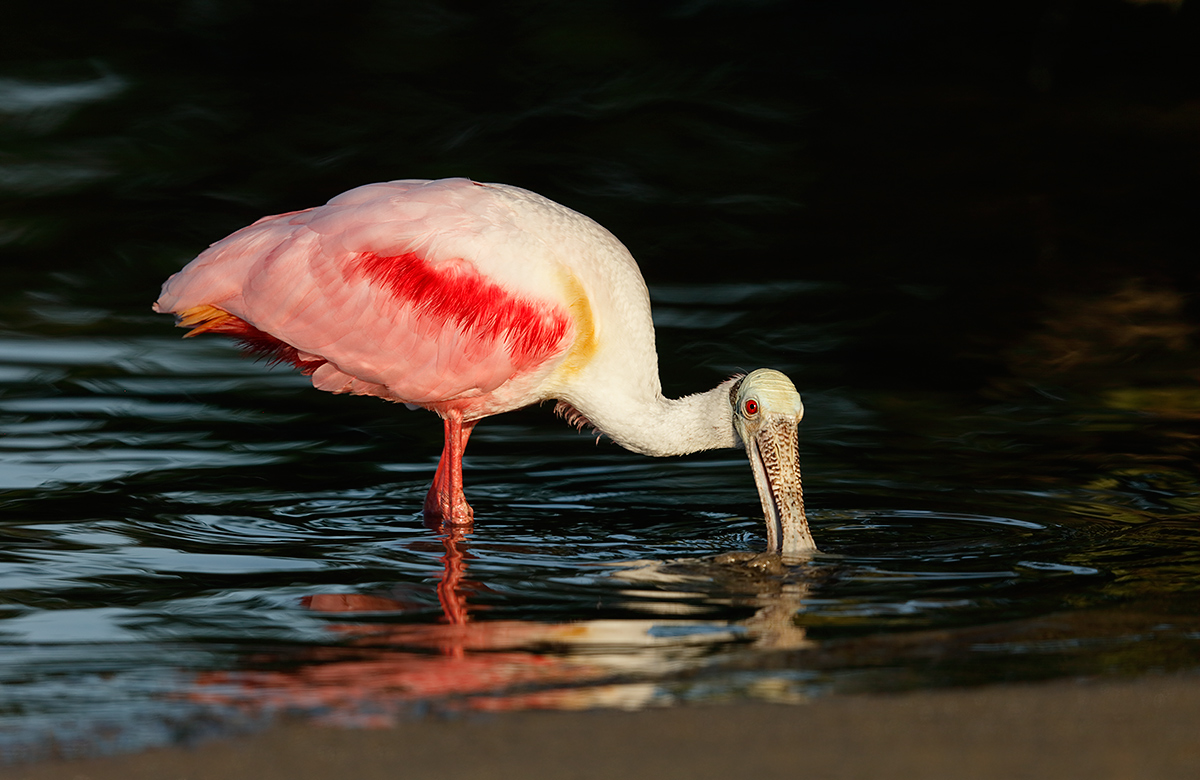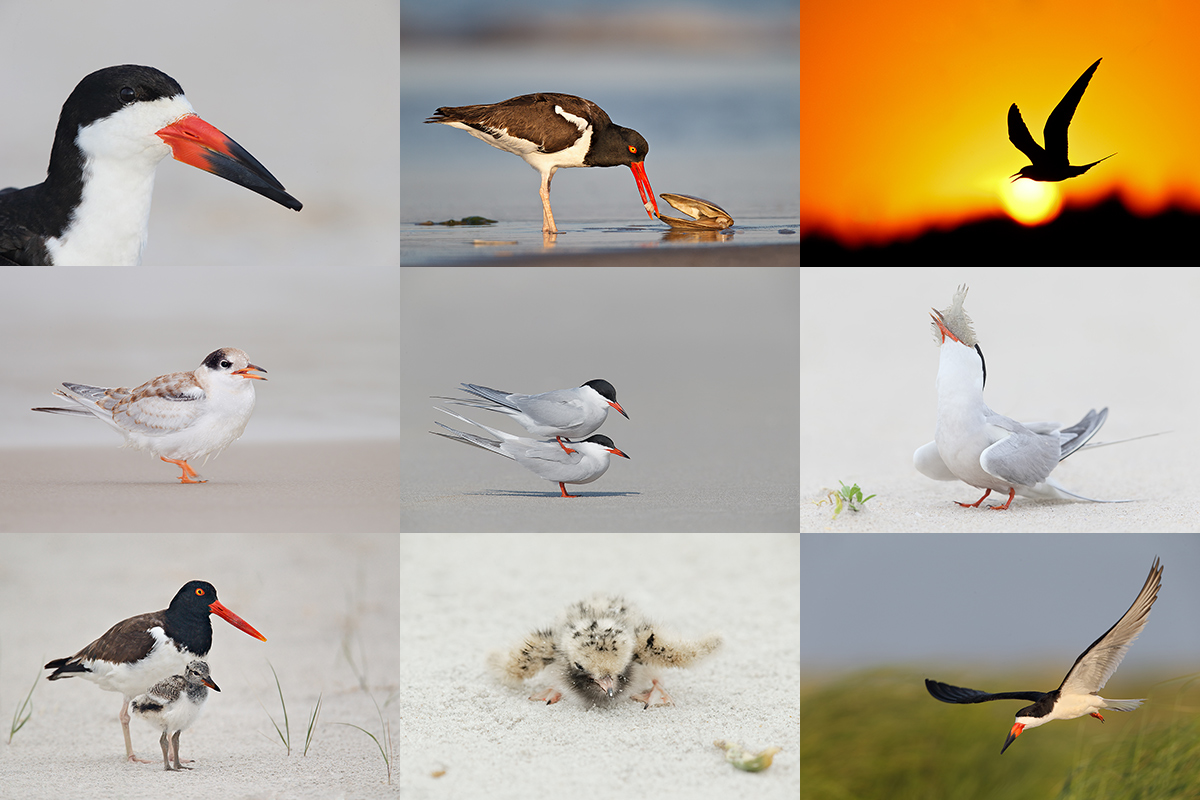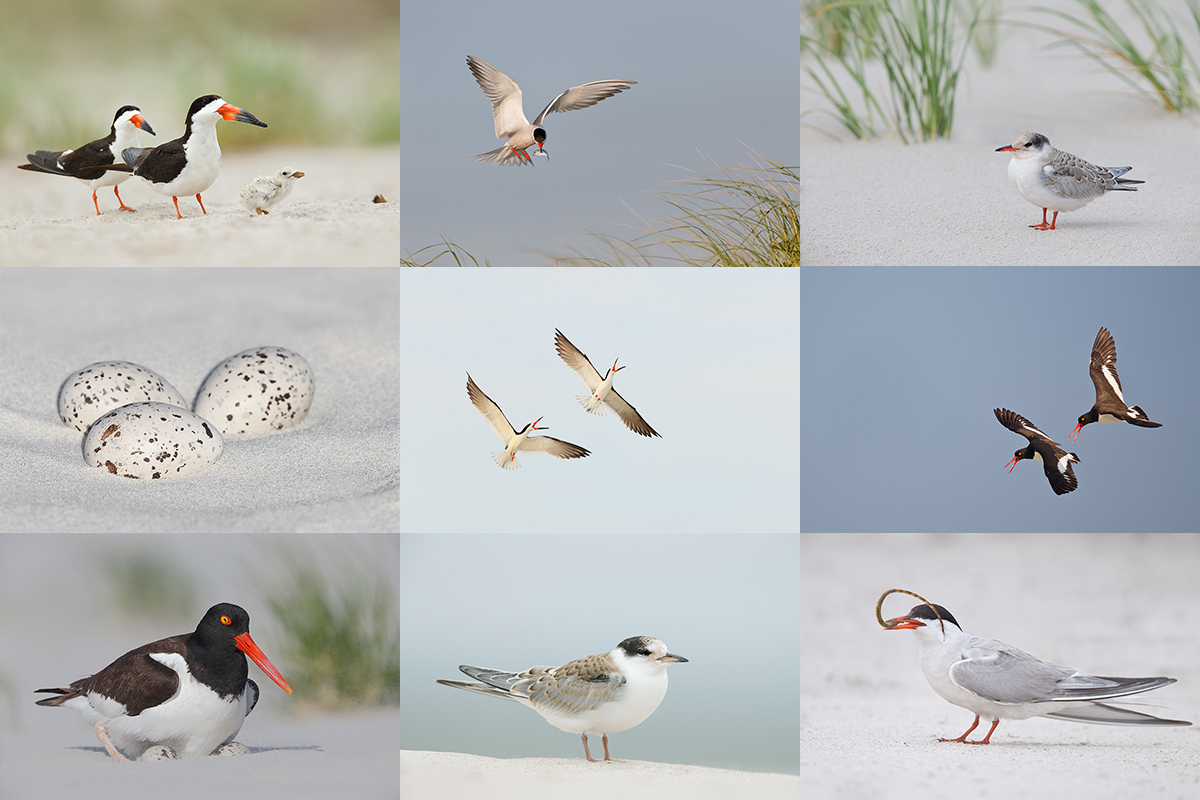What’s Up
After a short morning photo session at DeSoto on Sunday morning with friend Tom Pfeifer I headed back to the motel and then drove back to ILE. With lunch, a nap, and a stop at Publix, I was home just a bit after 1pm. Just in time for a second nap.
The Streak
Today’s blog post marks 192 days in a row with a new educational blog post, dozens of new topics to cover, and no end in sight until my big South America trip next fall. As always-–and folks have been doing a really great job recently–-please remember to use our B&H links for your major gear purchases. For best results use one of our many product-specific links; after clicking on one of those you can continue shopping with all subsequent purchases invisibly tracked to BAA. Your doing so is always greatly appreciated. Please remember: web orders only. Please remember that if you are shopping for items that we carry in the BAA Online Store (as noted in red at the close of this post below) we would appreciate your business.
|
This image was created late on the afternoon of my Fort DeSoto busman’s holiday with the BLUBB-supported Canon EF 600mm f/4L IS II USM lens, the Canon Extender EF 1.4X III, and the Canon EOS-1D X Mark II with a 64GB Card and Reader ISO 400. Evaluative metering +1 stop: stop: 1/640 sec. at f/5.6 in Av mode. Daylight WB. A single AF point one to the left of the center AF point/AI Servo/Shutter Button AF as originally framed was active at the moment of exposure. The selected AF point was on the top of the bird’s lower neck just forward of its upper back. Click on the image to see a larger version. AF micro-adjustment: +7. (More soon!) Image #1: Roseate Spoonbill feeding in late afternoon light in soft blue water |
Rewarded For Being Lazy or Rewarded For Being Wise and Prudent?
After the IPT I stayed an extra night so that I could enjoy two extra photography sessions, Saturday afternoon and Sunday morning. The pelican/Sandwich Tern feeding spree afternoon action was but a fraction of what it had been on the three previous afternoons. Two blog folks–both IPT veterans–who had previously purchased the Fort DeSoto Site Guide e-mailed me on Friday and met me at the location specified in the DeSoto Current Conditions Update on Saturday afternoon. They thought that the leftover action was pretty amazing.
I did not so I said my goodbyes and left early. As I trudged through the sand I debated about heading to the North Spit to see if anything nice had showed up. I got back to the car at 7:10 about an hour before sunset. Part of me said, “Don’t be lazy. Make the drive, do the walk and see what’s there. You might get something great. Don’t be a quitter. You are not gonna make any good pictures in the motel.”
Another part of me countered, “Take it easy. You’ve done a lot lately. Major surgery. Namibia. The Fort DeSoto IPT. Give yourself a break.”
I packed up and headed back to the hotel despite the gorgeous light.
In the Fort DeSoto Site Guide, I advise that folks leaving the park a bit early check several spots on their way out. I followed my own advice and was thrilled to find a pretty nice spoonbill feeing in the late light. Pink bird. Soft blue water. Pretty sweet.
|
This image was also created late on the afternoon of my Fort DeSoto busman’s holiday with the BLUBB-supported Canon EF 600mm f/4L IS II USM lens, the Canon Extender EF 1.4X III, and the Canon EOS-1D X Mark II with a 64GB Card and Reader ISO 400. Evaluative metering -2/3 stop: 1/1600 sec. at f/5.6 in Av mode. Daylight WB. A single AF point two rows up and one to the right of the center AF point/AI Servo/Shutter Button AF as originally framed was active at the moment of exposure. The selected AF point was on the upper back just forward of the bend of the wing. Click on the image to see a larger version. AF micro-adjustment: +7. (More soon!) Image #2: Roseate Spoonbill feeding in late afternoon light in black water |
The Black Water Background…
When the bird fed close to the mangroves the water turned a very dramatic black…
Your Favorite?
Help keep the blog interactive by letting us know which spoonbill image you like best, the pink and blue or the pink and black? And do let us know why you made your choice.
IPT Similarities
The Fort DeSoto and the Nickerson Beach IPTs have a lot in common. Lots of birds, lots of sand, and lots of learning. The big difference is that there are lots more flight opportunities at Nickerson: hovering terns, birds landing at the nest, and with luck and the right morning winds, skimmers skimming.
|
From upper left clockwise to center: Black Skimmer head portrait, American Oystercatcher dining on surf clam flesh, Common Tern at sunset, Common Tern adult swallowing flatfish, Black Skimmer in flight, newborn Common Tern chick, American Oystercatcher with chick, fresh juvenile Common Tern (with fill flash), and Common Terns copulating. |
Nickerson Beach Terns/Skimmers/Oystercatchers Instructional Photo-Tour (IPT): July 18-22, 2016. 4 1/2 DAYS: $1899. Limit 10/Openings 8.
Meet and greet at 3pm on the afternoon of Monday, July 18. Limit 10.
The primary subject species of this IPT will be the nesting Common Terns. The trip is timed so that we will get to photograph tiny chicks as well as fledglings. There will be lots of flight photography including adults flying with baitfish. Creating great images of the chicks being fed is a huge challenge. In addition to the terns we will get to photograph lots of Black Skimmers courting, setting up their nesting territories, and in flight (both singles and large pre-dawn flocks blasting off). Midair battles are guaranteed on sunny afternoons. And with luck, we might even see a few tiny chicks toward the end of the trip. We will also get to photograph the life cycle of American Oystercatcher. This will likely include nests with eggs and tiny chicks, young being fed, and possibly a few fledglings.
Nesting Piping Plover is also possibly. There will be lots of gulls to photograph; most years I am able to find a few Lesser Black-backed Gulls of varying ages in addition to the Herring, Ring-billed, and Great Black-backed Gulls. You will learn to identify and age the various gull species. There will likely be some Willets feeding along the surf and with luck we might get to photograph a handsome juvenile or two. In addition to the locally breeding shorebirds, we will likely get to see some southbound migrant arctic-and sub-arctic breeding shorebird species such as Sanderling, Semipalmated Plover, and maybe even Red Knot.
|
From upper left clockwise to center: Black Skimmers with tiny chick, Common Tern landing with baitfish for young, fledged Common Tern chick in dunes, American Oystercatchers/display flight, adult Common Tern with pipefish for chick, Common Tern fledgling in soft light, American Oystercatcher on nest with eggs, American Oystercatcher 3-egg clutch, battling Black Skimmers. |
The IPT Logistics
The tour will begin with a meet and greet on the afternoon of Monday, July 18, 2016. That will be followed by our first shooting session at the beach. From Tuesday through and including all of Friday we will have two photography sessions daily. Our morning sessions will start very early so that we are on the beach well before sunrise. We usually photograph for about four hours. Then we will enjoy a group brunch. We will always have a midday break that will include a nap for me. That followed by our daily afternoon classroom sessions that will include image review, workflow and Photoshop, and a review/critique of five of your trip images. Folks are always invited to bring their laptops to brunch for image sharing. I always have mine with me but heck, I am a big show-off. Afternoon in-the-field sessions generally run from 5pm through sunset.
Breakfasts are grab what you can. Four brunches are included. Dinners (if at all) will be on your own as we will often get back to the hotel at about 9pm. There is a fridge in every room and a supermarket within walking distance of the hotel so nobody should starve. You will learn a ton during the nine shooting sessions, the four in-classroom sessions, and even at lunch. Early morning and late afternoon parking is free. If we want to head back to the beach early we will need to arrange tight carpools and share the $30/vehicle parking fee. Non-photographer spouses, friends, or companions are welcome for $100/day, $450 for the whole IPT.
Save a space by calling Jim or Jen at the office at 863-692-0906 and arranging to leave your deposit of $599–credit cards are accepted for deposits only. Your balance will be due on April 18, 2016. I hope that you can join me for what will be an exciting and educational IPT.
Please Remember to use our Affiliate Links 🙂
To show your appreciation for my continuing efforts here, we ask, as always, that you get in the habit of using my B&H affiliate links on the right side of the blog for all of your photo and electronics purchases. Please check the availability of all photographic accessories in the BIRDS AS ART Online Store, especially the Mongoose M3.6 tripod heads, Induro tripods and ballheads, Wimberley heads and plates, LensCoats and accessories, and the like. We sell only what I have used, have tested, and can depend on. We will not sell you junk. We know what you need to make creating great images easy and fun. And we are always glad to answer your gear questions via e-mail.
I would of course appreciate your using our B&H affiliate links for all of your major gear, video, and electronic purchases. For the photographic stuff mentioned in the paragraph above we, meaning BAA, would of course greatly appreciate your business. Here is a huge thank you to the many who have been using our links on a regular basis and visiting the BAA Online store as well.
I would of course appreciate your using our B&H affiliate links for all of your major gear, video, and electronic purchases. For the photographic stuff mentioned in the paragraph above we, meaning BAA, would of course greatly appreciate your business. Here is a huge thank you to the many who have been using our links on a regular basis and visiting the BAA Online store as well.
Be sure to like and follow BAA on Facebook by clicking on the logo link upper right. Tanks a stack!
Typos
In all blog posts and Bulletins, feel free to e-mail or to leave a comment regarding any typos or errors. Just be right 🙂


















I live in Athens, GA Artie. Will be retiring in August and will be looking to attend one of your IPT’s soon after. Can’t wait.
Hey Hank, Thanks, and mazel tov on the upcoming retirement. a
My first reaction after looking at both was to fav the 2nd photo, but after looking a little longer I think I like the first one best. The blue in the background seems to compliment the colors of the spoonbill better and I do like the action of the water droplets. I get the feeling the bird is about to say something in the 2nd photo. =). Lots of pink shades in both photos which is lovely.
Nice work.
Thanks Hank. It is nice to see you here. Where do you live? artie
I love the colors in the second on. The black water is wonderful!!
Hi Artie.
Both images very striking.
Whether it was wise to stay or leave? a good compromise since you stayed in your vehicle and used the BLUBB. And you have two lovely images to show for your tenacity. I prefer image one, unlike many folks who have already commented. I find the direct eye contact in image two quite disconcerting.
kind regards D
PS
Mongoose turned up today, a very cool piece of kit.
Now if I could just get PM to work.
D
Hey David, Thanks. If you are having trouble with Photo Mechanic, it might be worth your while to give Camera Bits a call (Pacific time). Their help guys on the phone are pretty amazing.
artie
Hi Artie, As many have said, both images are great, but for me, the seconds takes the cake. The darker background isolates the spoonbill better than the first image and for some reason, even though the saturation of both images is most likely similar, the colors in the second seem more intense. And the eye, in the second image, seems like he is checking you out and therefore I anthropomorphize the bird is thinking, “why is that guy trying to take my photo when I am busy trying to get a meal”. Love the interaction! When I shoot the local red-tail hawks here on the golf coarse, I think the best images are when the bird is looking right at you. PS, unlike you to take a break, but probably wise!
Yes, wise. And well-rewarded 🙂
a
They’re both terrific. Choosing between them is hard.
I like the height of the bird out of the water in the first. More of the brightly colored legs is nice. The water droplets are cool and give a sense of action. The bird feels more isolated in the first – maybe because you don’t have the bit of land in the foreground, and because the water is more smooth and uniform.
I like the body/head pose of the second one more. The eye looks as if it is looking right at you, and seeing the top of the bill adds another textural element that I really like. I also like the choppy reflection of the bird in the water. The contrast between the dark water and bright bird makes the bird feel more dynamic too. I don’t really care for the strip of land in the foreground, but its not a deal-breaker and it was likely unavoidable given the bird’s position.
Overall, its tough, and both are great. If I had to keep just one, though, I think I would choose #2. I think the head/eye/beak benefits of #2 outweigh the legs/water droplet benefits of #1.
Ask me again in 15 minutes, though, and I might reverse myself…
Thanks Brendan. Good stuff. a
Love the second image Artie.The dark water makes a nice contrast with the pink and the reflection and active feeding are a nice bonus.The sharp red eye is great.The dark water also makes this shot distinctive as you don’t see that in most Roseate images.
I like both images: beautiful! However, image #2 is my favorite.
In image #1, I really like the drops of water hanging in mid-air! I might like to see the bird moved up a little bit from the lower edge.
In image #2, the ‘brown triangle’ actually doesn’t bother me because I am too focused on the bird’s face, particularly the red eye staring into the camera. I really like the angle of the bird too. (In fact, I didn’t notice it at all until I read some of the other comments!) I like the movement in the water and especially like the contrast between the black and the color of the bird. Makes the bird ‘pop’.
re:
“I might like to see the bird moved up a little bit from the lower edge.”
Me too. I came pretty close to cutting off the bird’s virtual feet… a
I like the last spoonbill shot. I love the way the eye of the spoonbill is engaging the viewer. Although the action is not quite as intense as the first image, I think his head turn and filtering action outweighs the first image.
I love the first shot – the head position and the water droplets at the tip of the beak. To my mind the head position in the second shot detracts, as does the blurred sill in the lower foreground. I really enjoy your work, Artie – rest up, and keep it up.
Thanks Aubrey. What do you mean by “blurred sill”?
a
Hi, Artie. Both lovely images, but I prefer the second, because “you deserve a break today.” 🙂 as you know, luck favors the prepared mind and you were ready for the great shot. The black background is great, also the detail on the bill, the color, and more.
I pick the Pink and Black…I like the contrast…it’s soothing, relaxing, and very pleasing. I like the position of the bird and his look, and the water dancing on top of his head. Love the background above the bird. The image shows how close to shore he is, giving the viewer more of an idea of this birds behavior.
Question: Are you using any kind of filter on the lens?
Thanks Jackie. No filter. a
not even a UV filter? Just wondering, it’s always suggested as putting a uv filter on to protect your lens, so I’m wondering is that what the pro’s do? I do it.
There are no UV filters for super-telephoto lenses. For intermediate telephotos that take a 77mm filter, NEVER USE A UV Filter. Ever. They slow AF and degrade image quality. The only ones recommending them are the camera store salesmen who prey on the ignorant…
a
Oh My G!!! So glad I asked!!! I don’t think I’m IGNORANT but I do trust….I trust you more!! Thank you!! I knew something was wrong, long story… Wish I had spent my life doing what I love…GEESH I do feel ignorant!!! Love you Art for telling me!!
Hey Jackie, There is nothing wrong with being ignorant: lacking in knowledge or training. I am ignorant of lots of things 🙂
YAW. a
I prefer the second…. mainly because the dark/black background really compliments the colours in the bird. The ‘brown triangle’ does not worry me as much as the two highlighted areas of water, near the top on the left hand side!
Don’t mind them at all as they complete a triangle of light tones from upper left to lower right… a
Thanks Gary, I too wish that he had been a bit more away from the shoreline… a
I like them both but lean towards the second. Black water can often be featureless but here it’s good due to the other colours. I also particularly like how the eye really sparkles. However I’m not keen on the brown triangle at the bottom of the frame.